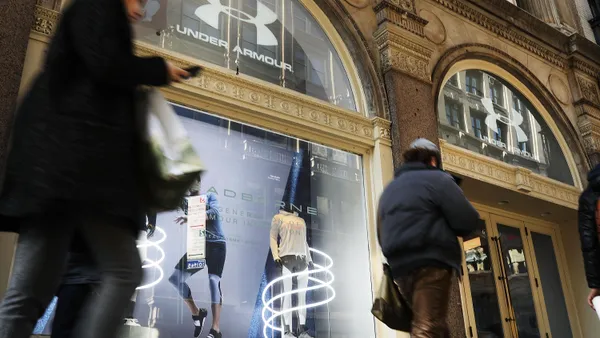Dive Brief:
-
Ross Stores on Thursday reported that second quarter sales rose 9% to $3.7 billion, as comparable store sales rose 5%.
-
Net pre-tax earnings in the quarter reached $517.8 million (or $389.4 million after taxes) from $510 million (or $316.5 million after taxes) in the year-ago quarter, according to a company press release.
-
The company has raised its long-term store potential to 3,000 locations, up from its previous 2,500 target, with plans for new stores in both existing and new markets. Its flagship Ross Dress for Less will eventually have some 2,400 locations nationwide, up from previous plans for 2,000, and its dd's Discounts chain could reach some 600 stores, up from previous plans for 500.
Dive Insight:
With a healthy economy and continued affection for off-price shopping, Ross is more concerned about beating its own robust comp sales in future quarters than about its competition, executives said on Thursday. Its sales growth was broad-based across merchandise categories, with apparel and non-apparel performing equally well, they told analysts, according to a transcript from Seeking Alpha.
In an era when apparel sales are increasingly moving online, the company's bold plans for its brick-and-mortar expansion stand out starkly. The company will be opening stores at a rate of about 100 each year, with plans for its flagship Ross stores to fan out beyond the 38 states where they operate now, though expansion within existing markets will continue to dominate, Chief Operating Officer Michael O'Sullivan said. The main constraints on its store growth are real estate availability and operational constraints, he said.
It's a rational play, considering that an average new Ross store reaches about 60% to 65% the productivity of an average existing Ross store, according to Chief Financial Officer Michael Hartshorn.
But the economic backdrop may be obscuring some weaknesses at the chain, warned GlobalData Managing Director Neil Saunders. "Without this external stimulus, Ross would likely be on a lower growth trajectory than it has been over the past year or so," he said in comments emailed to Retail Dive, noting that the company's own guidance of a 1% to 3% rise for comparable sales in the quarter is a "realistic estimate of what performance might have looked like if the economy was not firing on all cylinders."
"While this is far from disastrous, it does underline the fact that Ross needs to engineer better productivity from its stores," he said. "We sometimes get the impression that as operationally sound as Ross is, it lacks the hunger and dynamism to make bold moves."
That includes missing out on a merchandising diversification beyond apparel that is boosting its off-price competitors, he said. "Ross remains behind the curve in categories like home," he warned. "These are fast-growing areas, of which the company is taking only partial advantage. While it would be imprudent to do something just because a rival is doing it, we note that TJX's thinking on home is far more advanced, and this has paid dividends. As Ross becomes more mature in clothing, it needs to start thinking about the levers it can pull to generate higher sales."














